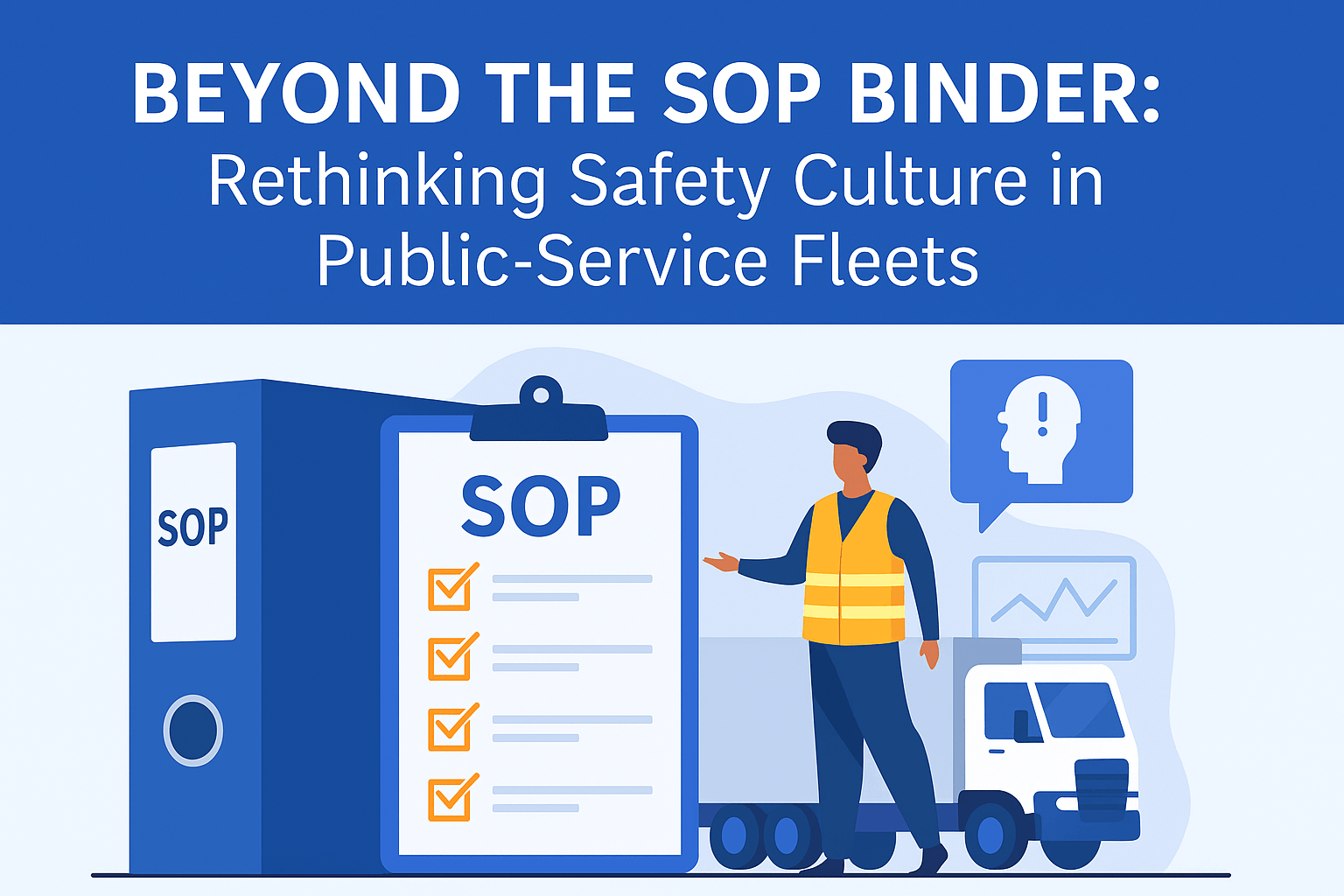
As modern fleet operations strive for fewer accidents, tighter compliance, and smarter performance metrics, Driver Monitoring Systems (DMS) have become indispensable safety tools. These systems—from distraction detection to fatigue alerts—have a proven track record of preventing crashes, reducing liability, and improving driver behavior.
But here’s the catch: technology alone doesn’t create safer drivers. Behavior change requires more than alerts—it requires understanding.
The key challenge for fleet managers, EHS officers, and safety leaders isn’t just adopting new tools. It’s doing so in a way that respects driver privacy, earns driver trust, and connects monitoring with meaningful learning experiences that support long-term behavioral change.
What Are Driver Monitoring Systems?
DMS use sensors, AI, and onboard cameras to monitor driver attention, fatigue, distraction, and unsafe behaviors in real time. Typical features include:
- Inward-facing cameras to detect drowsiness, mobile phone use, or seatbelt noncompliance
- Facial and eye-tracking AI to monitor driver alertness and engagement
- Telematics data integration for full-context behavior analysis
- Real-time alerts and post-trip reports for coaching and risk profiling
The National Highway Traffic Safety Administration (NHTSA) cites driver error as the leading factor in over 90% of traffic accidents. When implemented responsibly, DMS can be an early-warning system that helps fleets intervene before incidents occur.
The Human Factor: Privacy and Trust Concerns
Despite their safety benefits, DMS implementations sometimes face internal resistance. Drivers may view the systems as overly invasive, especially if rollout plans lack clarity or context.
Common concerns include:
- Being “constantly watched” by inward-facing cameras
- Fear of punitive use of captured footage or scorecards
- Uncertainty about data storage and access
- Feeling like a number, not a professional
A 2023 ATRI study found that while 76% of fleets using DMS reported improved safety outcomes, nearly half of drivers expressed discomfort or concern regarding privacy and how management could utilize captured footage.
Connecting Monitoring to Meaningful Learning
One reason drivers resist monitoring systems is that they’re often introduced without conversation or context. Safety tools are installed, scorecards are distributed, and coaching sessions begin, but without tying this to a broader context, drivers may feel targeted instead of supported.
That’s where successful fleets take a different approach: they connect the dots between monitoring, training, and psychology.
When drivers understand why they’re being monitored and see how it relates to skills they’ve learned or real-world outcomes, they’re more likely to buy in.
For example:
- Monitoring identifies distraction → training reinforces situational awareness → drivers self-correct over time.
- Fatigue alerts trigger coaching → coaching recalls learning modules on rest and alertness → behavior improves sustainably.
This feedback loop—where monitoring reinforces learning and learning informs behavior—is what drives long-term change.
Best Practices for Ethical and Effective DMS Implementation
- Lead with Transparency
Communicate early and clearly about the system’s purpose, why it’s being implemented, and how it benefits drivers and the business. Emphasize support, not surveillance.
Tip: Include drivers in pilot testing and feedback sessions. Can you give them a voice in the rollout?
- Set Boundaries for Data Use
Document and share a clear policy outlining:
- What data is collected
- Who can view it
- How long it’s stored
- How it’s used (e.g., for coaching, not for termination)
Make it easy for drivers to access and understand their data.
- Focus on Real-Time, Constructive Feedback
Use alerts to coach, not to punish. Pair DMS insights with short, targeted microlearning or refresher training sessions reinforcing safe behaviors.
Behavioral coaching combined with DMS can reduce risky driving events by up to 60% within months.
- Build a Culture of Learning
Position DMS as one part of a larger safety and development ecosystem. Integrate DMS data with driver training platforms, mentorship programs, and ongoing learning opportunities.
Drivers are more receptive to feedback when it feels like part of a growth journey, not a disciplinary process.
- Respect Personal Time and Space
Ensure that monitoring is deactivated during off-hours or personal use when applicable. These boundaries protect driver privacy and maintain trust.
The Hidden Benefit: Engagement Through Understanding
Driver monitoring systems aren’t just about preventing accidents but about fostering awareness. When monitoring is paired with training and used to support growth, it empowers drivers to become more self-aware, accountable, and motivated.
Fleets that take this integrated approach report:
- Reduced incidents and violations
- Better insurance rates
- Increased driver satisfaction
- Lower turnover and higher morale
And ultimately, they see a shift in culture—from compliance-driven safety to values-driven safety.
Final Thought: Safety Is a System, Not a Single Tool
DMS works best not as a standalone fix, but as part of a connected ecosystem that includes:
- Behavior-based training
- Driver feedback loops
- Coaching and mentorship
- Continuous learning opportunities
When you connect monitoring, learning, and experience, you don’t just catch unsafe behavior—you change it.
Empower your team. Build trust. Drive safer.
It’s not about watching your drivers. It’s about helping them see themselves more clearly.







